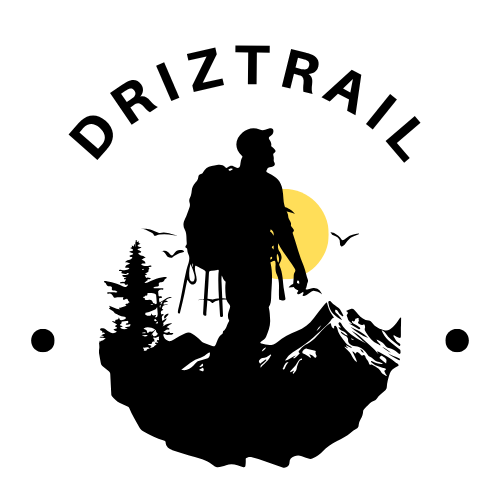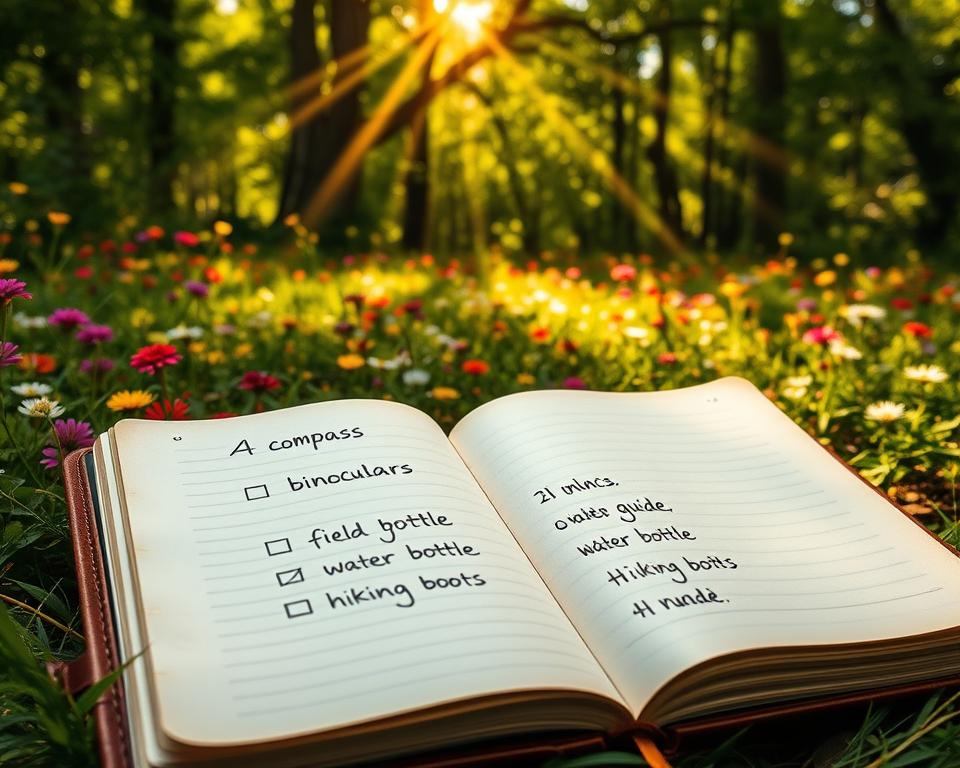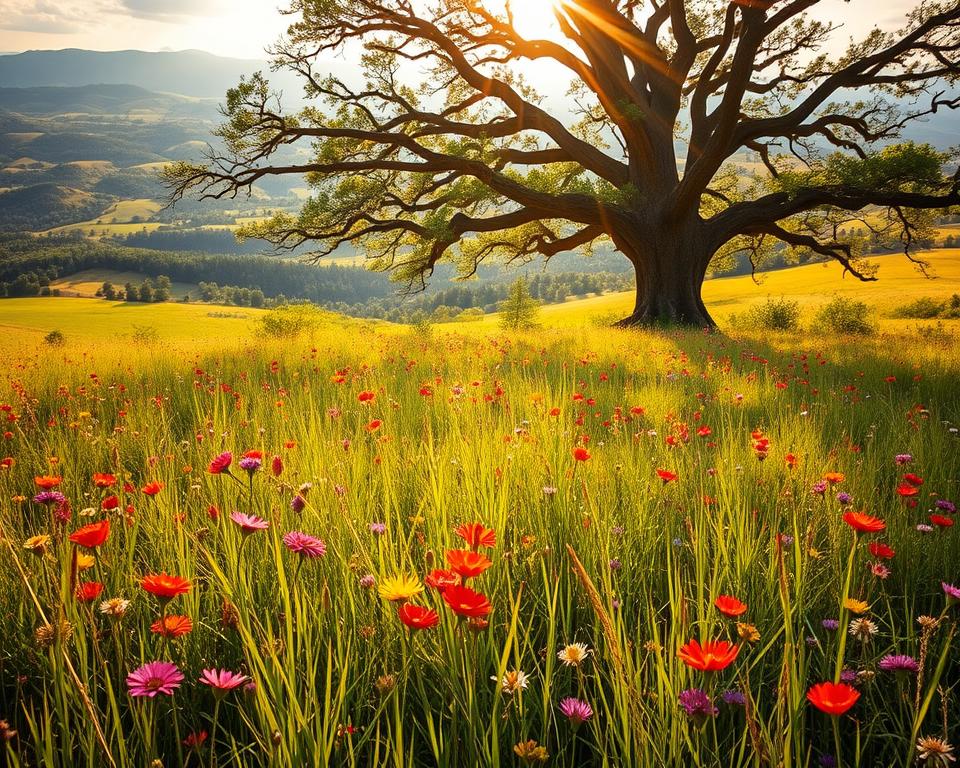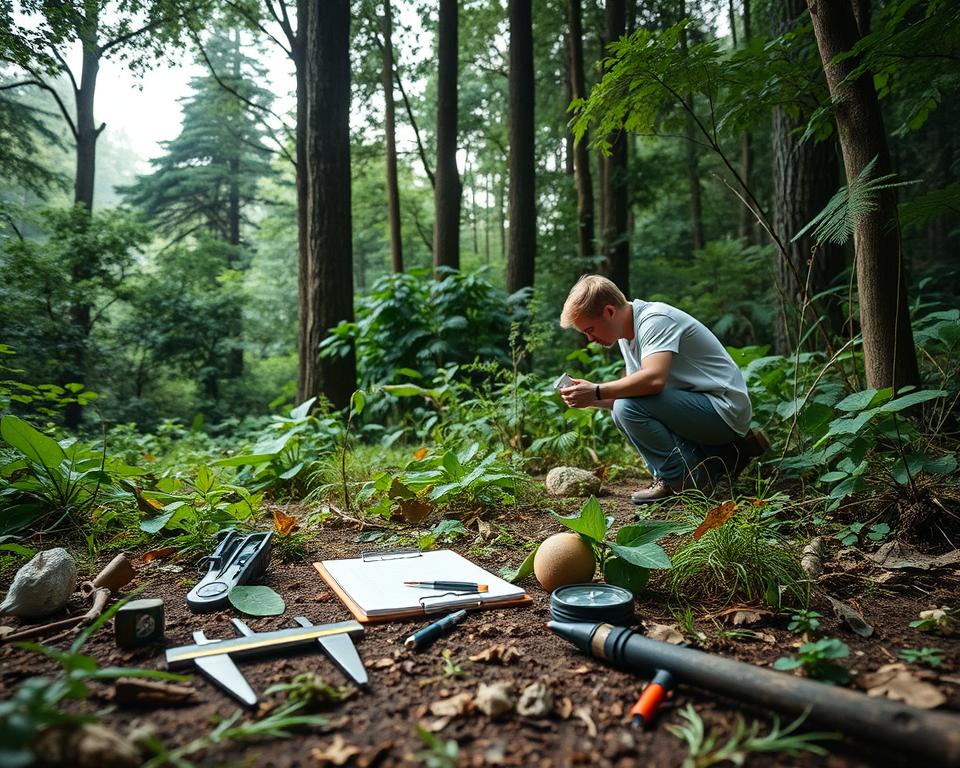Anúncios
Nature examples anchor how you relate your daily observations to the wider world in 2025. Have you ever wondered how simple notes from a walk can connect to global facts like 71% ocean cover or average ocean salinity near 35 ppt?
You will get a clear map—from geology and oceans to seasons and senses—that helps you notice, describe, and share what you see. The guide uses current, widely cited context: Earth is the largest terrestrial planet that supports life, land lies mainly in the Northern Hemisphere, the ozone layer reduces UV, and weather patterns limit accurate forecasts to a few days.
What you learn is practical and cultural, not a single tool or claim. You will find simple, repeatable steps: start a phenology journal, map a local watershed, or compare observed features on an atlas. Act responsibly and check reliable sources as you apply ideas to your own neighborhood.
Introduction: Why Nature examples matter to you in 2025
Start here: quick, practical orientation to what you can notice, record, and use today. This short section tells you what to do first, how to pace yourself, and how to keep learning without special gear. Use these steps tonight or this weekend.
Context you can use right away
Label what you see. Note whether a feature is living or nonliving, and write a quick location and time. Keep entries specific because weather forecasts only stay reliable for a few days.
Anúncios
Use free aids. Satellite basemaps, public webcams, and local field guides help you check terms. Treat them as optional tools, not one-size-fits-all answers.
How this listicle is organized for quick action
- H2 concepts for fast orientation.
- H3 checklists that point to hands-on prompts.
- Short tasks you can finish in a single day—track sunrise, note wind direction, or map a nearby stream.
Practical takeaway: start small, verify with reputable sources, and invite others to join. These low-cost steps help you connect daily observation to broader ideas about life and the environment without overcomplicating your routine.
The natural world at a glance: simple definitions that guide your choices
A few short definitions help you spot what’s natural versus made, so your observations stay consistent.
Anúncios
Quick rule of thumb: natural things form or persist without direct human fabrication. Artificial items are made intentionally by people, even if they use natural materials. This rule keeps your notes simple and useful.
Living things include plants, animals, fungi, algae, and microbes. Nonliving natural things are rocks, water, air, sunlight, and weather. Keep these categories handy when you record a sighting.
Some edges blur. A beaver dam is part nature because animal behavior created it. A concrete dam is artificial. Both change a river, but their origins differ.
- Ask three quick questions: Did it form biologically, geologically, or atmospherically?
- Is it self-maintaining without human care?
- Does it match known things like clouds, streams, or stones?
When unsure, describe color, texture, shape, and context before labeling. Share your terms with other people so group notes line up over time.
Nature examples: a curated list you can observe, learn from, and share
Start your field list with simple sights you can check on any walk or visit. Keep notes brief and respectful. Photograph without touching habitats and avoid removing specimens.
Living things to spot
Plants: note leaf shape, bark texture, or flowers. Look for tiny duckweed on still water and tall trees in parks to see how plants grow in different settings.
Find fungi on damp logs and algae along pond edges. Scan tidepools or reef exhibits for coral, and observe animals from a distance.
Non-living things to record
Notice water as stream, ice, or fog and how light shifts at sunrise and sunset. Pick up small pebbles to check grain size, layers, or crystals like quartz.
- Quick notebook idea: two columns — living vs. nonliving.
- Share weekly: photo set with short captions that name each item and why it’s living or nonliving.
- When unsure: describe color, texture, and context before labeling; consult a field guide later.
Earth basics and big-picture metrics you can remember
A handful of memorable metrics helps you describe our world in everyday talk. Keep these short facts ready so you can explain size, surface makeup, and why the environment matters for life where you live.
Key facts to tell others
Headline: roughly 71% of the surface is water and 29% is land. That simple split explains why coasts and rivers appear so often on maps.
Describe the planet as the largest rocky body in our Solar System and the only one known to support life. Mention that most inhabited land sits in the Northern Hemisphere.
Quick, conversational ways to explain metrics
- Use a globe or satellite basemap to show the land-water split visually—this makes numbers concrete.
- Offer a short analogy: if Earth were a basketball, the atmosphere would be thinner than a coat of paint.
- When asked about weather, say the system is chaotic, so forecasts are most reliable for a few days.
- Note the ozone layer reduces UV at the surface—an easy way to show why the atmosphere helps living things.
- Connect basics to local observations: rivers, prevailing winds, or seasonal daylight shifts you notice over the years.
Tip: Keep frames simple and check a trusted science or government site before sharing exact figures. These are clear, practical ways to make big facts feel local and useful.
Geology and tectonic plates: shapes, rocks, and slow-motion change
Slow-motion forces under your feet shape the maps and landforms you can read today. The earth natural fabric is split into migrating tectonic plates that meet at three main boundary types: convergent, divergent, and transform.
Plate boundaries and landforms you can spot on a map
On maps, look for linear mountain belts, mid-ocean ridges, and offset coastlines to infer plate edges.
- Convergent: arcs of volcanoes and deep trenches.
- Divergent: rift valleys and mid-ocean ridges.
- Transform: offset rivers or straight fault lines.
Igneous, sedimentary, and metamorphic clues in everyday rocks
In hand samples, igneous rocks show interlocking crystals. Sedimentary types may have visible layers or grains.
Metamorphic pieces often show foliation or banding from heat and pressure. Try a three-rock challenge: photograph one of each and compare at home.
Iconic formations to explore through images or travel planning
Use public imagery to study Grand Canyon, Giant’s Causeway, Devil’s Tower, and Vinicunca for pattern cues. Track how erosion shapes landscapes over years and how internal energy drives uplift and volcanism.
Respect rules: collect only where allowed and favor photos with a coin or pen for scale. Learn more about plate processes at plate tectonics.
Water on Earth: oceans, lakes, rivers, and why they’re everywhere you look
Trace a stream and you trace a system that links rain, groundwater, people, and plants. That simple act shows how local sights connect to global totals and everyday choices.
Hydrosphere in numbers: water covers about 71% of the earth. Oceans hold roughly 96.5% of surface water. Glaciers and ice caps contain about 2.4%, other surface and groundwater about 1%, and the atmosphere holds ~0.1% of freshwater.
Key figures to remember
- Most water is salty and in the oceans; only a small fraction is usable fresh water.
- Rivers gather precipitation, runoff, groundwater recharge, springs, and melting snow or ice.
- Deltas form where sediment slows and the stream spreads into a larger body of water.
Hands-on ideas you can try
- Trace a local stream on a map from headwaters to mouth; mark tributaries and any confluence points.
- Sketch a watershed boundary by following ridgelines on a topo map to see what feeds your creek.
- After rain, observe safely from a distance—note runoff paths, storm drains, and where water pools.
Notebook tip: keep a simple water budget: rainfall days, visible runoff, and baseflow in dry weeks. These notes show how water as a natural resource helps support life along its path without big claims. Be respectful of access rules and avoid slippery banks for safety and to protect the environment.
Oceans: one connected system with regional names and distinct stories
Across the globe, the salty sea behaves as a single, connected body with local characters. Treat the coasts you visit as parts of that larger system to link local observations to wider patterns.
Five major oceans and salinity basics
Five named basins — Pacific, Atlantic, Indian, Southern, and Arctic — are the common names we use for areas of one global ocean.
Average seawater salinity is about 35 ppt, though it varies by region. More than half the ocean area lies deeper than 3,000 meters.
Keep descriptions simple: salinity affects buoyancy and how water moves, but you do not need technical formulas to notice the effects.
Shoreline and webcam observation tips
- Record tides and times from webcams or a visit; compare photos taken at high and low tide.
- Watch for wave energy and color shifts from sediment or blooms; note wind direction in your log.
- Observe safely: stay on firm ground, never turn your back on waves, and keep distance from wildlife.
- Compare coast types — sandy beach, rocky headland, estuary — to see how energy, erosion, and deposition differ.
- Take a week of short webcam notes to follow tide and wind changes and share two photos of one spot at different tides.
Quick tip: notice human structures like jetties and how they change sand movement, but describe what you see without assuming causes you can’t verify.
Lakes, ponds, rivers, and streams: moving and standing waters you can visit
Small ponds, deep lakes, and winding streams each tell a simple hydrologic story you can read on a visit. Notice depth, surface motion, and where water comes from. These quick cues help you describe what you see without relying on strict size rules.
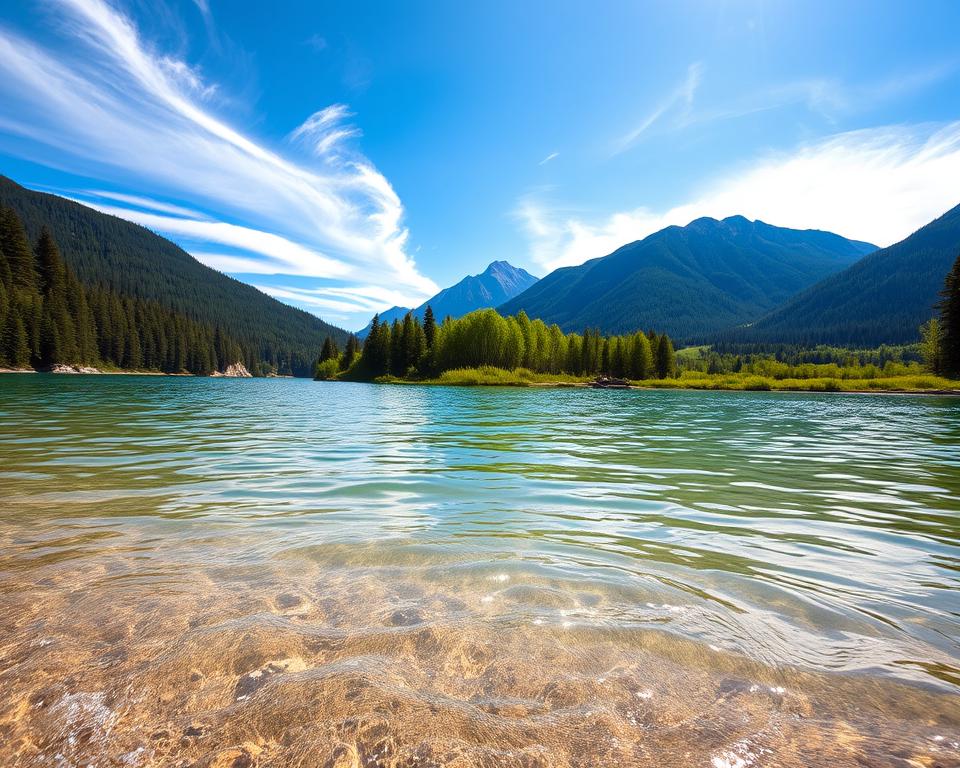
How to tell standing water from moving water
Standing waters — lakes and ponds — often show calm surfaces and clearer water near shore as sediment settles. Lakes tend to be deeper; ponds are usually shallower, but local labels vary.
Moving waters — streams and rivers — show a visible current and carry sediment downstream. Look for riffles, pools, and small sand fans where flow slows.
Field-friendly tips: flow, sediment, deltas, and springs
- Note inflows/outflows and any temperature change that suggests a spring.
- Examine banks and bottom materials: sand, silt, gravel, or rocks and the surrounding soil — they tell recent flow history.
- Where flow meets still water, scan for tiny deltas or sand fans; these are useful mini examples of larger river deposits.
- Estimate width and depth non-invasively, keep photos from the same spot, and describe area, observed depth, and flow before naming the feature.
- Respect access rules and choose public points to reduce erosion and keep people and habitats safe.
Atmosphere, climate, and weather: what to track day by day
A few short notes each morning build a local record that helps you tell weather from long-term climate trends over years. Start with simple, repeatable observations you can keep doing every day.
Air composition and the ozone layer
Air is mostly nitrogen and oxygen, with variable water vapor and trace gases. That mix explains why humidity changes how the day feels.
The ozone layer reduces ultraviolet radiation reaching the surface. In plain language: the atmosphere shields life and affects what you can safely do outdoors.
Weather versus climate: timescales and limits
Weather is what happens today or over a few days and is inherently chaotic. Forecasts are useful but can shift—treat multi-day predictions as guidance, not certainty.
Climate is the pattern you see across decades. Ocean currents, latitude, and landscape shape local climate, so compare your daily notes to regional summaries by month or year.
Seasonal patterns you can record in a simple notebook
- Jot daily: temperature range, cloud types, wind direction, and precipitation.
- Note markers: first frost, first 70°F day, or first thunder—these help track seasonal shifts.
- Record when unusual stretches occur (many warm days in a row) without assuming causes; your log is a neutral archive.
- Compare monthly notes to official summaries to learn variability in your local environment and nature cues.
Practical tip: keep language neutral and descriptive. Your goal is a clear archive that links sun-driven energy, visible clouds, and wind to what you observe each day.
Seasons and phenology: reading the year’s natural calendar
Short, steady notes about buds and bird visits help you read the year’s rhythm without special gear.
Start simple: pick five reliable dates to track each year — first bud, first bloom, peak leaf color, leaf drop, and first frost.
Subtle seasonal shifts in different U.S. regions
Timing varies by coast, valley, and elevation. Coastal spots often lag or lead inland sites, and mountains show later springs.
Backyard observations: buds, blooms, leaf color, and first frost
Use the same tree or shrub as your reference. Take a photo from the same spot each season; a four-panel view is useful.
- Note visiting species like early pollinators or migrating birds you see.
- Record weather context (late frost, dry spell) so you can compare across years.
- In winter, track evergreen vs. deciduous differences and the first lengthening of day by your watch.
Share kindly: swap a monthly summary with neighbors. Your local log helps people learn and appreciate the cycles and the simple beauty nature shows without making broad claims.
Plants and the places they grow: trees, grasses, and tiny powerhouses
Plants around you tell small stories about light, water, and where they root. Notice how towering trees and tiny duckweed use different strategies to survive and reproduce.
Compare forms: towering trees, ground-hugging mosses, and floating duckweed each reveal how plants fit light and water conditions. Look for bark patterns, leaf arrangement, and where species cluster in sun or shade.
From sequoias to duckweed: form, function, and everyday care ideas
Keep plant IDs simple: photograph leaves, flowers, and whole form, then verify later with a reputable field guide or local extension. Track bloom times and seed set in your notebook to notice shifting timing year to year.
- Observe leaves: shape, arrangement, and texture; note seasonal changes in your yard or park.
- For basic care, think right light, consistent watering, and suitable soil—test one adjustment at a time so you can tell what changed.
- Use food herbs on a windowsill or native shrubs suited to your climate; match plants to site conditions rather than forcing them into ill-fitting spots.
Share what you learn: swap photos and simple notes with neighbors or community groups to build local practical knowledge about species, soil, and daily life with plants.
Textures, shapes, and patterns: turning the outdoors into your gallery
Treat the outdoors like a small gallery where textures and lines guide your eye. A short walk can reveal spirals in seedheads, ribbed bark, or rippled sand that feel like deliberate composition.
Fibonacci spirals, bark art, and patterned sands
Start with one theme per outing — pick spirals, stripes, or cracks and collect three to five photos. Pair a close-up texture with a wider view to show context.
- Gallery tour: focus on a single set of shapes and make a small pattern set to share.
- Look for Fibonacci-like spirals in seedheads or shells and ridged bark on trees.
- Compare rough vs. smooth rocks and note where lichen or moss adds color.
- Frame a landscape with repeating lines—dune crests, wave sets, or rows of grasses—to see rhythm.
- Write one sentence about how a pattern makes you feel to build your personal connection.
Respect fragile subjects: do not touch living coral or disturb mud flats. Share small curated sets with friends to invite noticing and quiet appreciation of the beauty nature shows.
Senses in nature: sights, sounds, and smells that ground your day
Pause outside for two minutes and notice how sight, sound, and scent can make an ordinary day feel more present.
Start with a simple list: three things you see, two you hear, and one you smell. Keep notes short and judgment-free so you return easily.
Feel air and wind on your skin and note how sound shifts with direction. After rain, describe scents and how surfaces darken, then dry.
- At dawn or dusk, watch color shifts and reflections on water or windows.
- Listen in layers: distant hum, close calls, leaves moving—write what stands out without naming species.
- In winter, compare the muffling of snow to bare-ground days and notice footprints as visual stories.
Keep sensory notes brief and regular; a few words each time build a quiet connection to place. Share a short “sound minute” with friends when it feels right, and treat this as cultural appreciation of the outdoors and its everyday beauty nature shows.
Minerals, crystals, and elements: the building blocks under your feet
Beneath your feet are simple clues—shiny grains, blocky fragments, and soft clays—that tell stories about the planet’s makeup. A few small observations help you identify common finds and record them responsibly.
Common finds: quartz, feldspar, and clays
Learn three basics: quartz often looks glassy and resists scratching; feldspar is usually opaque and light-colored in granite; clays feel fine and sticky when wet. Use a hand lens and steady light to compare textures.
Responsible collecting and identification basics
Keep impact minimal. Check local rules before removing anything and prefer photos if collection is restricted. If you do take a sample, keep it small and note date, location, and context (river gravel, hillside, roadcut).
- Photograph with a coin for scale and use a hand lens for detail.
- Clean finds with water and a soft brush; avoid strong chemicals that change surfaces.
- Compare hardness with common objects (steel clip, copper coin) without damaging public features.
- Label samples simply: date, place, and short context so they stay useful over years.
- Treat minerals as educational natural resources and add notes about weathering and soil formation to your log.
Join a local geology or nature group for guided walks and practice. Store finds safely away from children and pets, and never collect from restricted or culturally sensitive sites.
Persistence and resilience: observing recovery and renewal
A few visits across months can reveal how life returns to disturbed places through predictable stages.
- Seedlings in open soil, resprouting shrubs, and pioneer species on bare ground—note these signs in your journal.
- Track which species appear first and which follow over months or years to map sequence and timing.
- Learn about local stewardship such as prescribed fire or regenerative agriculture through talks or displays.
Low-impact ways to support local landscapes
Join permitted cleanups or planting days where organizers guide you. Focus on respectful help, not results.
- Stay on trails, avoid trampling, and follow posted guidance to reduce human activity impacts.
- Share before-and-after photos of the same view to show recovery without assigning causes.
- Pick up litter only where allowed; document hazards and report them to organizers.
Practical note: notice how shade, shelter, and moisture return as vegetation regrows. Treat resilience as a theme to observe and celebrate small returns in your environment and in the wider nature around you.
Human interaction with the natural world: everyday connections
Small routines—like where you buy groceries or which plant you water—tie you directly to local and global living systems.
Cultural practices that notice and steward natural patterns
People have long used local knowledge to care for landscapes. Indigenous prescribed fire and seasonal harvest rhythms show how cultural habits track cycles.
Respectful learning means listening to community stories, attending talks, or visiting museums to see how people notice patterns and act with care.
At-home actions: journaling, community science, and local learning
Treat meals as reminders: most food comes from farms, gardens, and other natural resources. Use that fact to stay connected to where ingredients come from.
- Keep a short nature journal with date, place, and one line about a sight or smell.
- Join community science projects and follow local rules when you share observations.
- Map a weekly walk and list five features you notice; share with neighbors to build local knowledge.
Everyday connection is not about fixing everything. It is about learning how people are part of a place and how your notes can help a respectful, local dialogue.
Conclusion
Let simple routines—short notes, a photo, a quick map check—turn moments outside into lasting records. Use steady habits and verify details with trusted sources before you share.
Earth systems—geology, water, air, and life—interact to shape what you observe. Keep descriptions descriptive and cautious; forecasts have limits, so ground your notes in direct observation.
Try a few practical ways: revisit a spot through the year, keep a short log, and compare your notes with reputable science sites or museum displays.
Share findings with people you trust and invite different perspectives. Respect access rules and habitats so your work protects the environment you study.
Curiosity and care will grow your skills. Small, repeated steps teach more than grand claims ever will.
